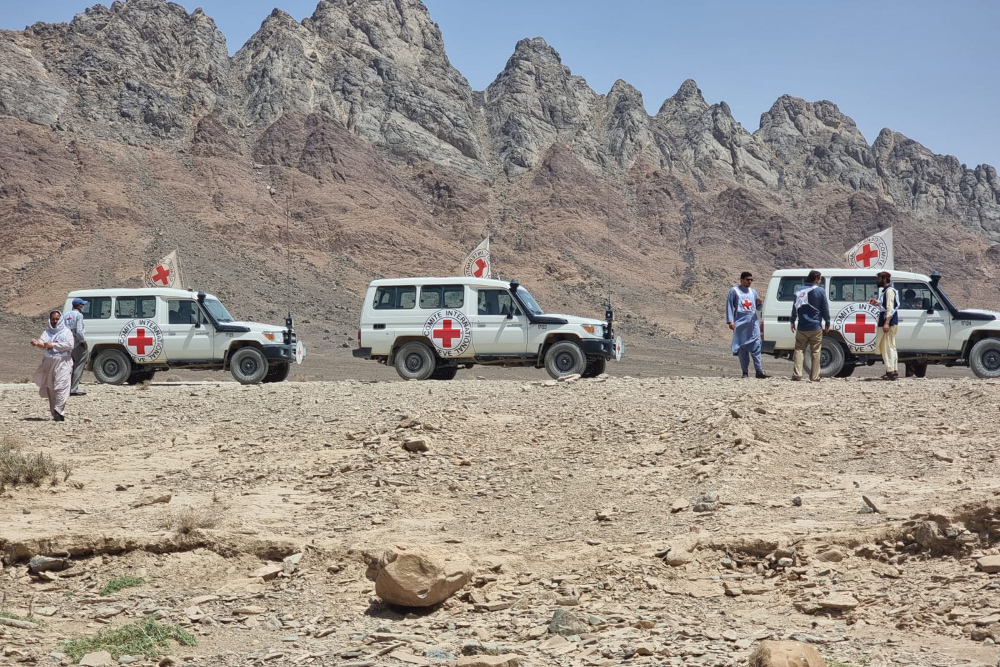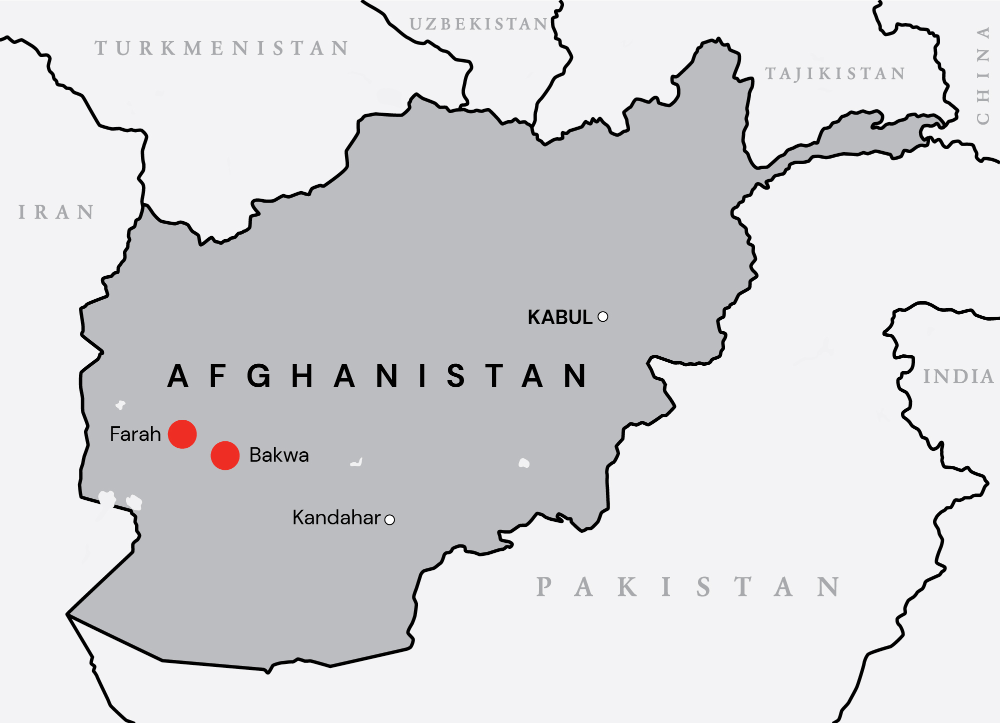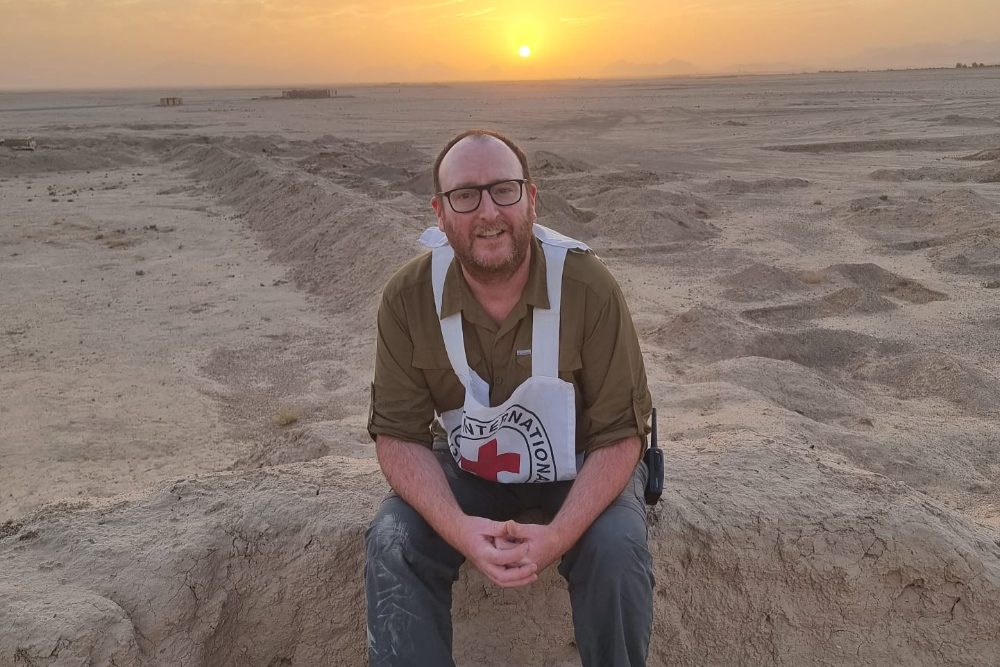I was an Australian nurse in Afghanistan
What I saw when Kabul fell will never leave me.

Six months ago, Australian nurse Kieren Box was in Afghanistan, treating the war wounded. His account of that time reflects on the chaos of the situation, and what the people of Afghanistan face now.
Brick buildings lining a strip of mud make up Bakwa’s district centre. The ruins of a caravanserai, where travellers once rested as they traversed the country, is about the only thing that stands out in the harsh landscape.
I worked in Bakwa from June to October 2021 as an operating theatre nurse with the ICRC, in a project implemented in partnership with the Norwegian Red Cross. The ongoing conflict left the people of Bakwa and surrounding areas with no access to major hospitals in the urban centres. The ICRC, together with the Norwegian Red Cross, provided medical care to war-wounded in the area.

Bakwa itself is a quiet place. The province around the town is scattered with farms growing cotton, melon, wheat and various other goods, irrigated with ground water drawn from deep underground by solar powered pumps. It has not rained for years, and the water and habitat engineers say that each new well needs to be dug deeper than the last.
The nearest main centre is Farah. A medium sized city with avenues lined by Australian eucalypt trees planted by the Russians in the 1980’s. The relative comforts of Farah were offset at night by the sporadic rumbles of artillery and heavy machine gun fire on the outskirts of the city. It became a familiar background noise every week.

The artillery was exclusively heading out and not in, the deep thumps rattling the windows. One morning over breakfast there was a particularly loud and close explosion. It turned out to be an Improvised Explosive Device (IED) that had been discovered and disposed of outside a nearby school, 200 metres from our front gate.
When the country changed forever
The battle for Farah started the day I left on R&R (Rest and Recuperation). That night with bags packed, I slept fully dressed, wearing my shoes, absolutely expecting to have to make a run for the shelter. Although the ICRC is well-respected, respect won’t stop a stray shell.
The fighting didn’t make it as far as our side of the city that night and the next day I flew out for what was supposed to be seven days. I wouldn’t be back for eight weeks. What happened in that period made worldwide headlines. To the outside world, everything changed in Afghanistan.
Across the country, as fighting came to a halt, hundreds of war wounded would flow into the medical centres as it became less risky to reach health facilities. During August alone the ICRC treated 10,000 war wounded country wide.
Uncertainty and fear take hold
But the entire health system is on the brink of collapse, with millions already struggling to access what facilities are left. Ever since the conflict escalated, hard-working doctors and nurses have been working without salary. Movement of money within the country has become increasingly difficult. While the number of wounded has subsided, there are still the day-to-day maladies to deal with. Expectant mothers attending the local midwife, sick children, the occasional traffic accident on the difficult roads, various bumps and scrapes that people get from working in the local farms.
The workers helping refurbish the health centre, the cooks and cleaners, have not been paid since August. The majority of the financial system remains frozen, with both international and internal funds (and hard currency) difficult to come by. Some more fortunate organisations can distribute very limited amounts of cash for payment to workers but only at a fraction of their expected wage. And many of these workers are supporting large extended families – sometimes up to 15 people depend on them.
There is scant food available and what is available is increasingly unaffordable to most. Just the price of cooking oil has doubled, along with the cost of basic staples, such as rice and flour. The local markets are still operating but the goods on offer are limited. This is not the first time the people of Afghanistan have faced such a crisis; some have prepared small reserves of cash and supplies. However, after months of drawing on these reserves they are running dry. Half of the population remains in dire need of humanitarian assistance. Many families have limited access to food. According to reports, more than three million children are at risk of malnutrition. This is set to get worse as the economic crises deepens and the effects of the drought continue.
There are grim predictions for the future of Afghanistan. Some estimates are as high as 98% poverty rate country wide.
There are enough medical supplies for the next few months in Bakwa, but after that it is unclear where the next supplies will come from. Farah is just one of 34 provinces across Afghanistan. While separated through distance and culture each one has lived through the same conflict and is suffering its ongoing consequences. There are still parts of the country experiencing daily violence and no one can really say with any certainty how long this will continue.
Sitting on the precipice of disaster
For now, from my room, I can hear the school next door. The ring of the bell between classes, the happy shouts of the children and the teachers friendly voice as she teaches the children to count to 10.
Things might get worse for the people of Afghanistan. The tight border controls are making the movement of goods in and out of the country complicated, which compounds the economic situation. The ICRC will stay to help, long after my posting has ended.
The resilience of the people of Afghanistan will never cease to amaze me, but for now it seems that anxiety and uncertainty are the prevailing feelings among people in the country.